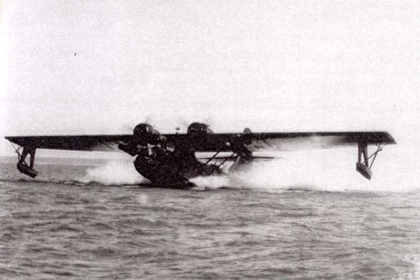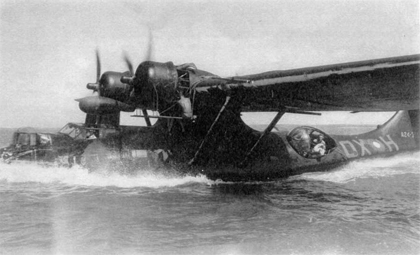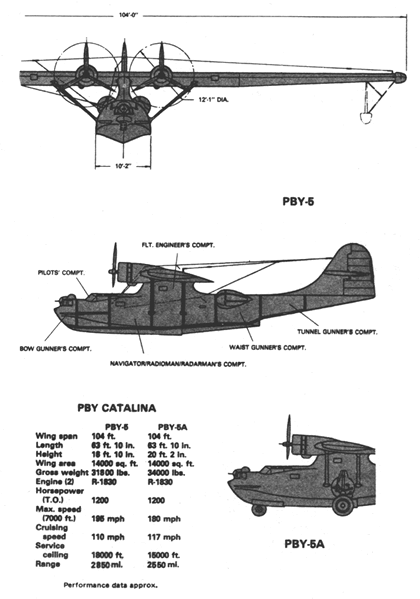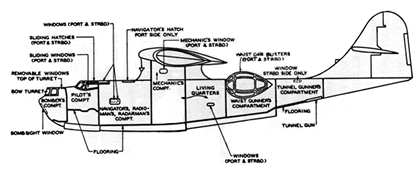CATALINA AIRCRAFTPBY Catalina was an American and Canadian-built flying boat of the 1930s and 1940s. PB stands for Patrol Bomber, with Y being Consolidated Aircraft’s manufacturer identification. It could be equipped with depth charges, bombs, torpedoes, and .50 caliber machine guns and was one of the most widely used multi-role aircraft of World War II. The PBY Catalina was the most successful flying boat ever produced. First flown in March 1935, they were in production for over ten years and were designed and built by the American aircraft manufacturers, Consolidated Aircraft of San Diego, California. The Catalina in RAAF service, despite its vulnerability due to lack of speed, was a front line aircraft effectively taking the fight to the Japanese through its long distance mine laying flights.
The PBY was the first US aircraft to carry radar and fulfilled diverse missions including torpedo-bomber, transport and glider tug. Famous were the "Black Cat" Catalina’s which, painted matt black, roamed the western Pacific from December 1942 finding Japanese ships by radar at night and picking Allied survivors from ships and aircraft in boats and dinghies. RAAF Catalinas were famous for their precision laying of mines in enemy water ways and harbors. In this role it performed a substantial contribution towards victory for the Allies in the Pacific War by blockading essential oil ports and closing the "back streets" to Japan. About 3300 Catalinas were produced and several are still flying today as water bombers, flying geological surveys, carrying people, supplies and equipment to inaccessible areas and even flying sportsmen into remote areas for hunting and fishing.
|
||||||||||||||||||||
DESCRIPTION
The Catalina is a twin-engine high winged amphibious monoplane with
retractable wing tip floats. It features an almost cantilevered wing
mounted above a shallow but broad hull on a central pylon housing the
flight engineer. The wing has a rectangular centre section and tapered
outer panels, all of stressed-skin all-metal construction, though the
ailerons and trailing edges are fabric-skinned. A unique feature is the
wing-tip floats, which are mounted on pivoted frames, which can be retracted
electrically so that in flight the floats form the wingtips. The hull
is also all-metal, with a broad semicircular upper surface.
The bow has a mooring compartment and transparent sighting window with
a roller blind giving seawater protection. A turret all-round window
is fitted in the upper bow. The two pilots sit side-by-side in a wide
cockpit with large windows all round. Left and right gunner stations
comprise blister windows on the waist of the hull behind the wing. The
tail is of a tall design with the horizontal tail mounted well up the
single fin. The power plant comprises a pair of two-row Pratt & Whitney
Twin Wasp engines neatly cowled on the centre section with cooling gills
and driving Hamilton variable-pitch propellers.
The PBY was one of the first US aircraft to carry radar. At first this was a metric wave radar with arrays of dipole antennas on the wings, and later a centimetric radar in a fairing on top of the cockpit. A Leigh light was installed under the wing.





